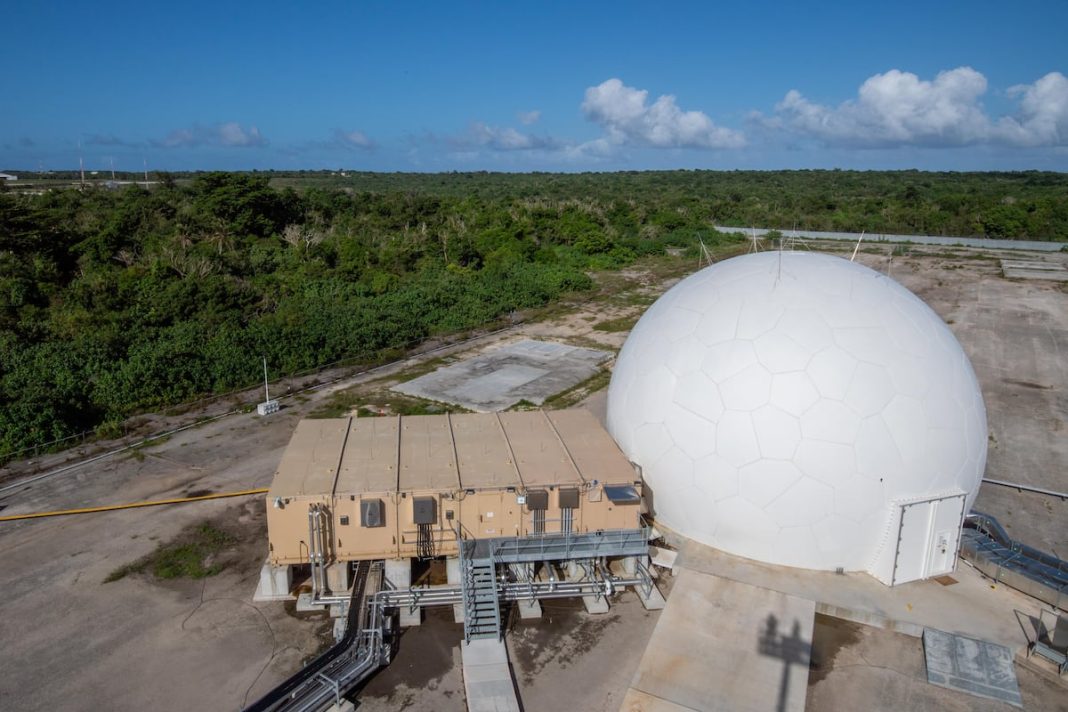The Missile Defense Agency (MDA) has successfully intercepted an incoming ballistic missile threat during a recent test conducted from Guam, marking a significant development in missile defense capabilities for the region. This test, described as the “first ballistic missile defense event executed from Guam,” aims to enhance protection of the strategically vital island against evolving threats.
As part of ongoing efforts by the Pentagon to establish a comprehensive air and missile defense architecture in Guam, the test involved the use of the Aegis Guam System equipped with an AN/TPY-6 radar and a Vertical Launching System. During the test, the system launched a Standard Missile-3 Block IIA interceptor that successfully destroyed a Medium Range Ballistic Missile target, which was air-launched and flying off the coast of Andersen Air Force Base.
The AN/TPY-6 radar, introduced to Guam’s defense capabilities earlier this year, was instrumental in tracking the target from shortly after launch until the point of interception. This radar technology incorporates advancements from the MDA’s Long-Range Discrimination Radar located in Alaska, which is scheduled for its own operational testing next year.
Lt. Gen. Heath Collins, the director of the MDA, emphasized the collaborative effort among various Department of Defense organizations in achieving this milestone. “This is a tremendous group effort and provides a glimpse of how organizations within the Department of Defense have come together to defend our homeland Guam now and in the future,” Collins stated. He highlighted the significance of building and validating integrated air and missile defense capabilities for the island.
The data collected from this successful test will contribute to ongoing concept development and requirements validation for the future Guam Defense System (GDS). The GDS construction will utilize multiple components from various military services, with the U.S. Army designated in 2023 to lead the acquisition and implementation for the defense architecture. The Army’s Rapid Capabilities and Critical Technologies Office is overseeing the establishment of a joint team dedicated to the project.
The MDA’s focus will include the development of systems that integrate into the GDS architecture, alongside creating a combined command center on Guam to accommodate all major command and control systems related to missile defense. This integrated structure will consist of the Army’s Integrated Battle Command System, the Navy’s Aegis weapon system, the Air Force’s command and control capabilities, and the MDA’s Command Control Battle Management and Communications system, known as C2BMC.
In addition to the existing systems, the GDS relies on various capabilities currently in development, mainly within the Army, while the Navy will continue to provide needed technology from its Aegis defense systems. The Army’s arsenal will also include the fielded Patriot system, the Integrated Battle Command System (IBCS), Mid-Range Capability missile launchers, and advanced radar features to enhance missile detection and interception abilities.
While this test signifies considerable progress in Guam’s missile defense readiness, Collins noted that visible changes on the island’s landscape are not expected in the immediate future. “Our first construction money to start building on the island is expected by 2025, so by the end of that year, we should begin military constructions at multiple sites,” he indicated, suggesting that ongoing development and upgrades will take place gradually over the coming years.
The MDA’s successful test reflects the United States’ commitment to ensuring a robust missile defense system in Guam, a region of critical importance for maintaining military presence, deterring adversaries, and upholding security in the Indo-Pacific area.





